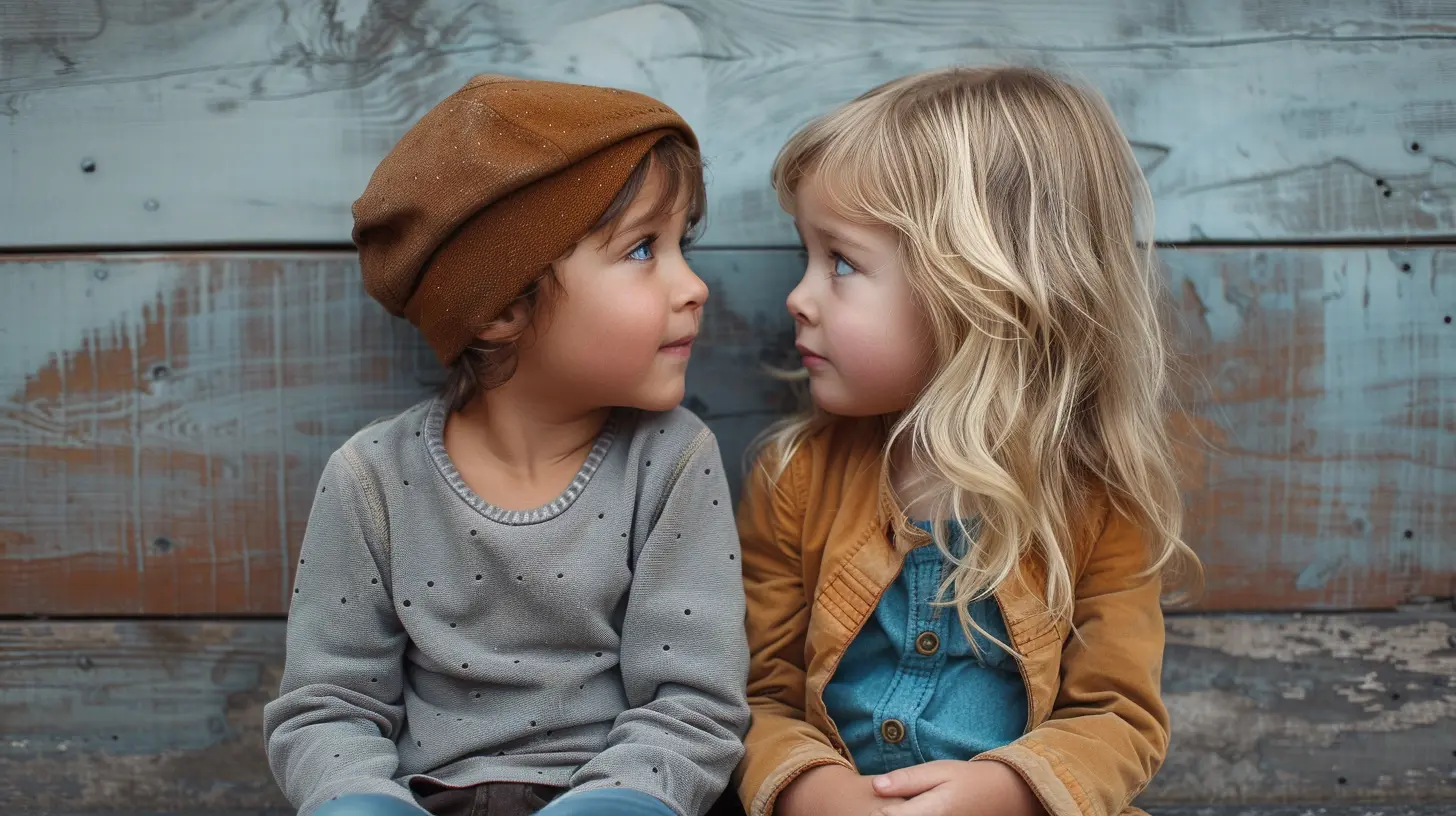How to Use Everyday Situations to Teach Empathy
7 November 2025
Empathy isn’t something you can force into your kid’s brain like downloading an app. It's more like watering a seed — with everyday moments being the sunshine and rain it needs to bloom. As a parent, you’ve got plenty of opportunities in your back pocket to help shape your child into someone who “gets it” — someone who considers others’ feelings, reaches out, and builds stronger, kinder relationships.
Let’s be real – teaching empathy isn’t about sitting your child down and lecturing them like it’s a college course. It starts right at home, in moments that appear small but carry big lessons. From sharing toys with siblings to watching someone struggle at the grocery store, each situation is a chance to build emotional muscles that last a lifetime.
In this article, we’ll break down how to use ordinary, everyday moments to teach your child the extraordinary skill of empathy.
Why Is Teaching Empathy So Important?
You might be wondering — does it really matter if my kid learns empathy early on?Absolutely. Here's why:
- Empathetic kids become better listeners. They don’t just wait for their turn to talk.
- They make friends more easily. Nobody wants to play with someone who can't recognize when they’ve hurt someone’s feelings.
- They handle conflict more peacefully. Instead of lashing out, they think, “How is the other person feeling?”
- They grow into emotionally intelligent adults. And these adults tend to be better partners, coworkers, and leaders.
So yeah — empathy? It's kind of a big deal.
Start With the Basics: What Exactly Is Empathy?
Before you can teach empathy, it’s good to know what we mean by it. At its core, empathy is the ability to understand and share someone else’s feelings. It's like emotional WiFi — being able to tune into what someone else is feeling without them spelling it out.There are actually a few types of empathy:
- Cognitive Empathy – “I understand what you’re feeling.”
- Emotional Empathy – “I feel what you’re feeling.”
- Compassionate Empathy – “I want to help because I care about how you feel.”
We want to teach our kids all three. The full package, not just the sympathy-lite version.
Everyday Moments That Are Perfect for Teaching Empathy
You don’t need to create elaborate scenarios or buy fancy books to help your child develop empathy. Life hands us golden opportunities every day — you just have to know where to look.1. Sibling Squabbles and Toy Battles
If your home sounds like a zoo some days, welcome to the club. But those squabbles? Prime territory for empathy lessons.Instead of jumping straight into referee mode, ask guiding questions:
> “How do you think your brother felt when you grabbed the toy?”
>
> “Would you like it if someone did that to you?”
Boom — just planted an empathy seed.
Instead of just enforcing rules, help them understand the emotional impact of their behavior.
2. TV Shows and Bedtime Stories
You probably already spend time reading to your child or watching cartoons together. That’s awesome — because stories are empathy machines.Pause during a show or story and ask:
- “Why do you think she’s crying?”
- “What do you think you would do if that happened to you?”
- “How do you think that character feels right now?”
These questions get your child into someone else’s shoes — exactly what empathy’s all about.
3. Grocery Store Encounters
You know those real-life moments that give you a pang? Like seeing an elderly person struggling to carry groceries or a child crying in another aisle?Don’t ignore them — use them.
Whisper to your child:
> “That lady looks tired. Do you think we could help her with the door?”
Modeling thoughtful behavior teaches your child how to respond with kindness — and how to notice when someone needs a hand.
4. Animal Interactions
Kids + animals = magic. Pets and animals can teach empathy in non-verbal, powerful ways.Did the dog shy away suddenly? Ask your kid:
> “Did you see how Buster backed away? Do you think he got scared when you yelled?”
Recognizing feelings in animals helps your child build awareness that not just humans have emotions.
5. Their Own Emotions
When your child is upset, don't rush to solve the problem. Sit with it.Say something like:
> “It sounds like you’re really frustrated. I’m here for you.”
By naming emotions and being present, you’re helping your child connect emotions to words — and later, to recognize those same feelings in others.
Be the Mirror: Kids Learn Empathy by Watching You
Here’s a truth that stings a little: your child is always watching, even when you think they’re buried in their Goldfish crackers.If you snap at someone on a stressful day, they notice. If you pause to help someone or show concern, they notice that too.
So if you want to raise an empathetic child, you’ve got to model empathy yourself.
Here’s how:
- Speak kindly even when you’re frustrated.
- Say things like, “That must’ve been tough for you,” when talking to others.
- Apologize when you’re wrong — “I see that I made you upset. I’m sorry I hurt your feelings.”
Kids don’t just mimic your words. They absorb your values.
Teach the Power of Apology and Repair
Every child is going to hurt someone’s feelings now and then. What matters isn’t the mistake — it’s what comes next.Teach your child that empathy plays a big role in making amends. It's not just saying “sorry” because they were told to.
Instead, guide them to see the emotional consequence:
> “Look at your sister’s face. She looks sad because you took her drawing. What could you do to make it right?”
Help them come up with ideas — a sincere apology, a drawing made together, a hug (if welcomed). It's about helping them take responsibility from the heart, not just the rulebook.
Encourage Perspective Taking
Empathy thrives when kids can imagine what it’s like to walk in someone else’s shoes. Even muddy, uncomfortable ones.Here’s a game changer: whenever your child is upset with someone — a friend, a sibling, even you — ask:
> “Why do you think they did that?”
At first, they might say, “Because they’re annoying!” But keep going:
> “What do you think happened before that? Could something have made them feel bad?”
This teaches your child to switch lenses and think beyond their own experience. It takes practice, but it's transformative.
Use Real-World Events (Gently)
If your child is old enough, even news events (age-appropriate ones) can spark meaningful empathy talks.See someone helping flood victims on TV? Say:
> “Imagine if our home flooded. How would we feel? Isn’t it amazing that those people are helping?”
Real-world context helps kids understand that empathy isn't just for siblings and friends. It stretches out into the world.
Praise Empathetic Behavior Specifically
When your child shows empathy — whether it’s comforting a friend or sharing without being asked — don’t just say “Good job.”Be specific:
> “I saw how you noticed Jane was sad and gave her your stuffed animal. That was really kind of you.”
This helps your child connect their actions to how someone else feels — and teaches them that empathy is something to be proud of.
Build Empathy Through Questions, Not Commands
Here’s where we often go off track as parents: we give instructions instead of asking questions.Instead of:
> “Say sorry right now.”
Try:
> “What happened here? How do you think she feels?”
Turning moments into mini conversations rather than commands helps your child reflect and internalize. You’re not just telling them what to do — you’re helping them think about why.
Stay Patient: Empathy Is a Slow Build
Quick reality check: no kid is empathetic 24/7. Not even close.They’ll still fight over toys, forget to say thank you, and sometimes act selfishly. That’s normal. Empathy takes time and repetition. It’s like brushing teeth — you’ve got to keep at it, day by day.
But every question you ask, every feeling you validate, every kind act you model — it’s all adding up. You’re laying the groundwork for emotional skills that will serve your child their entire life.
In a Nutshell
Teaching empathy doesn’t have to mean adding another thing to your overflowing parenting to-do list. You don’t need flashcards or fancy programs. Everyday moments — messy, loud, beautiful ones — are already your best tools.Use them wisely. Talk, ask questions, model kindness, and slow down long enough to notice those little chances that arise each and every day.
Your child doesn’t have to be perfect. They just need someone like you to guide them — with love, patience, and yes, a little bit of empathy too.
all images in this post were generated using AI tools
Category:
Teaching EmpathyAuthor:

Tara Henson
Discussion
rate this article
1 comments
Fable Adkins
This article offers valuable insights into cultivating empathy in children through everyday interactions. By recognizing teachable moments in daily life, parents can foster emotional intelligence and compassion. Practical examples enhance understanding, making it easier for parents to incorporate these lessons into their routines. Great read!
November 13, 2025 at 4:56 AM

Tara Henson
Thank you for your thoughtful feedback! I'm glad you found the insights and practical examples helpful for fostering empathy in children.


